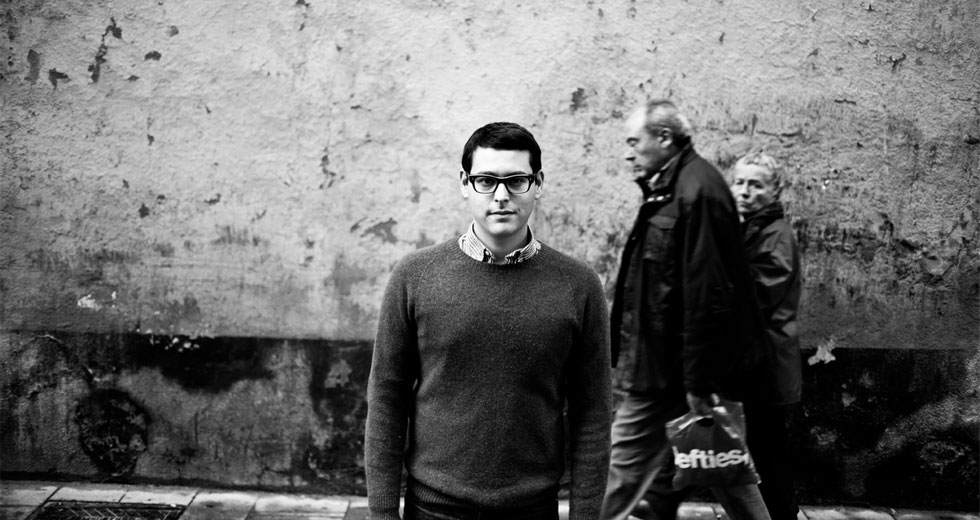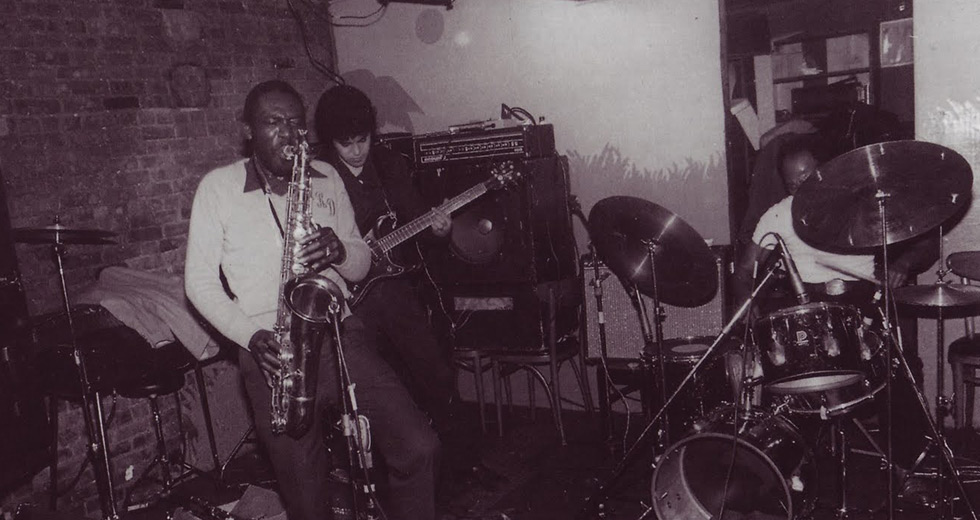Sounds of Future Past: The Lyricon
Peter Holslin tells the story behind the strange saxophone / analog synth hybrid
For years, Bill Bernardi’s domain was in the basement. His company, Computone, had gone out of business. His invention, a musical instrument called the Lyricon – which crossed a saxophone with an analog synthesizer – was a commercial failure. But instead of giving up, this ex-Marine turned instrument builder moved operations into the cellar of his family’s ranch-style Massachusetts home. Under the glow of swing-arm lamps, he’d peer through magnifying lenses at the Lyricon’s electrical components, tinkering for hours with his complex and temperamental creations.
“Basically mom was upstairs cooking, and dad was downstairs working on Lyricons,” recalls Bernardi’s now 49-year-old son, Paul.
In February 2014, Bill Bernardi passed away at age 79, succumbing to a fight with cancer. He took with him a crucial understanding of this early electronic wind instrument, which predated the MIDI horns common on the market today. What Bernardi left behind, though, was a vast, organized archive of his life’s work. Filing cabinets filled with circuits, oscillators, tools and documents. An old couch piled with broken Lyricons in their clunky modular console cases.
Lately, Paul has been sorting through this treasure trove. He’s eager to puzzle out the inner workings of his father’s invention, and to keep knowledge of the Lyricon alive.
The Lyricon has always been an obscure instrument – niche in the already narrow field of wind synthesis. But after all these years, Bernardi’s invention remains a key innovation. Working with a small staff at Computone and his business partner/fellow designer Roger Noble (who passed away many years ago), Bernardi envisioned, designed and manufactured three versions of the instrument: the Lyricon I; the more advanced Lyricon II (outfitted with two oscillators); and the Wind Synthesizer Driver, which could be used as a controller for a Moog, Oberheim or other analog synths.
If you listen attentively to Michael Jackson’s “Billie Jean” you can hear the bright, slightly honky horn strains of the Lyricon peppered throughout.
According to Jorrit Dijkstra, an associate professor at the Berklee College of Music and a longtime Lyricon expert, Bernardi developed the brass-plated body for the Lyricon and also devised the instrument’s key component – a high-precision, saliva-resistant transducer, which used a photocell to convert the player’s fingerings, air pressure and embouchure into nuanced musical expression.
“The lyricon is a wonderfully designed, extremely precise instrument, that responds extremely well to pitch, breath and lip changes,” says Dijkstra in an email.
Today the market for electronic wind instruments is dominated by companies like Akai and Yamaha, which specialize in horns that operate as MIDI controllers. There was a time, however, when the Lyricon was not just hot stuff, but pretty much the only “wind synth” around. Introduced by Computone in the 1970s, it produced colorful, futuristic horn sounds that fit in nicely with the jazz-fusion and progressive rock of the era. Throughout the ’70s and ’80s the Lyricon was picked up by jazz greats like Sonny Rollins and Rahsaan Roland Kirk. It was also embraced by in-demand studio musician/fusion man Tom Scott, AKA “Mr. Lyricon,” as he’s referred to in the Lyricon catalog.
Scott played the Lyricon in recordings by the likes of Steely Dan and the Grateful Dead. He even used it on Michael Jackson’s “Billie Jean” – if you listen attentively you can hear the bright, slightly honky horn strains peppered throughout the song. This was undoubtedly a coup for Computone. Unfortunately, by the time “Billie Jean” came out in 1982, the company had already gone bankrupt.
Bernardi, who was born in the Boston suburb of Quincy, started the company with Noble in the early ’70s. Bernardi was not a businessman, nor was he an instrument builder. In the Marines he’d served as a staff sergeant, and after an eight year stint he got a degree in electrical engineering and then took jobs with defense contractors like Northrop Grumman to build circuitry for guided missile systems.
Still, Paul says his dad’s move towards the Lyricon was a natural one. The Bernardi family had grown up surrounded by music. On top of his interest in electronics, Bill played multiple instruments, directed the local church choir and sang bass in a barbershop quartet.
We had a blast. I mean, how many people get to say they go to work and have fun?
“Dad was an inventor at heart. He was an entrepreneur. That’s what he wanted. That’s what was running through his blood,” Paul says. “He saw a connection of electronics and music, understood how it worked, and saw an opportunity... I think it was right in front of him.”
In Computone’s early years, the company was based out of a small workspace in the nearby town of Hanover. But they soon expanded operations, moving to a big, low-slung building in an industrial section of Norwell, Massachusetts. George Johnston, who was the head technician at Computone, thinks fondly of these years. His main job was technical, like tuning and calibration and working on Lyricon prototypes. But he also got to schmooze with visiting jazz musicians – including Tom Scott himself, who once rolled up in a limousine while on tour and asked Johnston if he could take a look at a malfunctioning delay processor.
“We had a blast,” Johnston recalls. “I mean, how many people get to say they go to work and have fun?”
The business seemed to be going in the right direction. Johnston says Robert Zildjian, of Norwell and Boston area cymbal giants Zildjian and Sabian, was a major investor. At one point instrument manufacturer Selmer was also partnering with Computone to make some of its Lyricons. But with the advent of MIDI in the early ’80s, interest was moving away from analog and towards digital. The instrument was new, and yet it was already being rendered obsolete by novel products like Yamaha’s WX7 wind controller.
There were other challenges too. The Lyricons were testy and difficult to fix. It also didn’t come with any modular presets, so even experienced horn players had trouble making it sound good. And they cost a lot. According to Johnston, the Lyricon I – a device of such handcrafted luxury that even its brass-plated keys were cut at Computone HQ – was priced at $3,295, or about $10,000 in today’s dollars.
“That’s a lot of money for a musician back then,” Johnston says. “All the horn players I’ve ever talked to said, ‘We either had an apartment or a car, but we couldn’t have both because horn players didn’t get paid that much.’”
Unable to get its products selling on the mass market, Computone was forced to shut down. Its Norwell offices shuttered sometime around 1980 or ’81. On the last day of operations, Johnston remembers finalizing everything with the remaining Lyricon customers and then turning out the lights. Later, all the factory’s milling machines, circuit boards and cases went up to auction.
That’s when Bernardi moved his Lyricon enterprise to the basement. Paul says he’d sometimes sneak down there to watch his father work on them. “Without disparaging my family and without disparaging certainly my father, I think it was a difficult time,” Paul recalls. However, he’s quick to add: “You wouldn’t trade it for anything, because it was just a cool upbringing… My father could’ve been more successful in another field. Maybe had he stayed with a company like Northrop, I’m sure he would’ve had a strong career. But that’s just not who he was as a person.”
I think the basis of the Lyricon was to drive a human expression into electronics.
All these years later, the Lyricon is as niche as it’s ever been. But it is not forgotten. Collectors and players chat about it online. Dijkstra, the Berklee professor, plays it regularly in his bands. He particularly loves the Wind Driver because of its flexibility. He connects it to an external interface designed by his friend – an electronics technician named David O’Brien – and uses it to play straight melodies, as well as bursts of cosmic avant-garde noise.
“I hate the plastic MIDI instruments,” Dijkstra says in his email interview. “I much more like the unpredictability and improvisational character of analog synthesis. It's harder to control, but for my music (I play improvised music) that's just what I like!”
Over the past year, Dijkstra and O’Brien have been helping Paul go through all the stuff that Bill left behind. Because of what happened with his business, Bill was sometimes wary about sharing his trade secrets. So they’re hoping to basically reverse-engineer the Lyricon and make sense of its inner workings.
The younger Bernardi isn’t an expert in this stuff; he works in finance, not music or electronics. But he’s happy to be taking up the mantle of his father’s work.
“I think the basis of the Lyricon was to drive a human expression into electronics,” Paul Bernardi says. “However it moves forward, it’s going to evolve, I suppose. We’ll see.”

